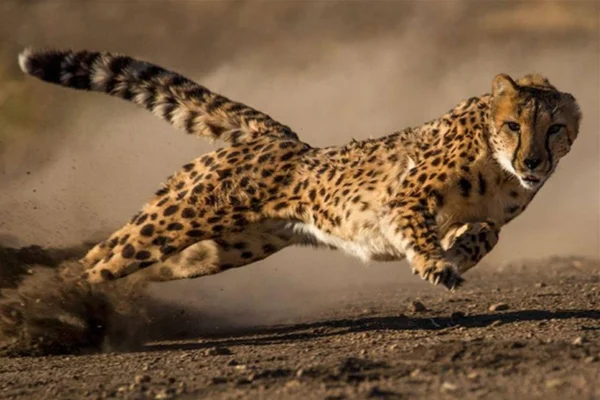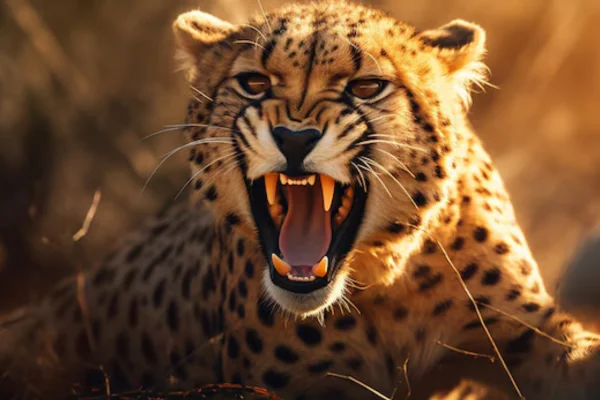The World's Fastest Animals: Speed and Elegance in Nature
Nature is full of impressive beings, each with their own unique abilities that make them special. Among these abilities, speed is one of the most fascinating and essential for survival.
In this article, we'll explore the world's fastest animals, highlighting their characteristics and how they manage to reach extraordinary speeds. We'll venture across land, water and air to discover how speed shapes the lives of these incredible beings.
The Masters of Speed in the Animal Kingdom
Speed in the animal kingdom is a matter of survival. Whether hunting or fleeing predators, speed can be the difference between life and death. Here, we'll explore some of the fastest animals and how their physical characteristics help them achieve impressive speeds.
Cheetah: The Ultimate Runner
When we think of speed, the cheetah (Acinonyx jubatus) is the first animal that comes to mind. This feline is undoubtedly the fastest land animal, capable of reaching speeds of up to 112 km/h. The cheetah has an aerodynamic body, long legs and a flexible spine that acts like a spring, allowing it to make great leaps with each stride. In addition, its non-retractable claws offer additional traction, similar to studded running shoes.

Peregrine Falcon: The Master of the Skies
In the skies, the peregrine falcon (Falco peregrinus) is the undisputed champion of speed. In a dive, or "stoop", this falcon can reach speeds of over 320 km/h. The perfect aerodynamics of its body and its pointed wings allow it to cut through the air with minimal resistance. Its highly developed eyes, capable of seeing small prey at great distances, complement its ability to hunt with precision at high speed.
Sailfish: The Swift of the Seas
In the oceans, the sailfish (Istiophorus platypterus) is the most impressive sprinter, reaching up to 110 km/h. This fish is easily recognizable by its large dorsal fin, which resembles a sail. The sailfish's body shape is highly hydrodynamic, allowing it to glide through the water with minimal resistance. Its pectoral fins act as stabilizers, helping it to manoeuvre quickly when hunting.
Antilocapra: The Relentless Runner
In North America, the antilocapra (Antilocapra americana) is one of the fastest animals, with a speed of up to 98 km/h. This animal is a perfect example of endurance and speed combined. Unlike the cheetah, which can only maintain its top speed for short periods, the antilocapra can sustain a high speed for longer distances, thanks to its highly efficient respiratory system and well-developed muscles.
Ostrich: The Swift Giant
Among land birds, the ostrich (Struthio camelus) is the fastest, being able to run at speeds of up to 70 km/h. Its long legs are adapted for running, with powerful muscles and elastic tendons that store and release energy efficiently. In addition, its wings, although not used for flying, help it maintain its balance while running.
Blue Marlin: The Agile Swimmer
The blue marlin (Makaira nigricans) is another marine sprinter, reaching speeds of up to 80 km/h. With an elongated body and a tapered beak, the blue marlin is designed to cut through the water with ease. Its ability to make quick and precise movements makes it one of the most effective predators in the oceans.
European Hare: The Little Sprinter
The European hare (Lepus europaeus) may not be as fast as the cheetah, but it still impresses with its speed of up to 72 km/h. This small mammal uses its speed mainly to escape from predators. Its strong and long hind legs allow it to jump quickly and efficiently, while its flexible body helps it to change direction abruptly.
Short-tailed Hawk: The Arrow of Heaven
Another master of the skies is the short-tailed hawk (Accipiter striatus), capable of reaching speeds of up to 160 km/h in horizontal flight. This small but powerful bird of prey has short, broad wings that give it great agility and maneuverability, essential for hunting smaller birds in fast, close flights.
Quarter Horse: The Equine Athlete
Among domesticated mammals, the quarter horse (Equus ferus caballus) is famous for its speed over short distances, reaching up to 88 km/h. This horse is widely used in short races and rodeos due to its burst of speed and agility. Its muscular legs and efficient breathing are key to its performance.
Hummingbird: The Swift Acrobat
The hummingbird (Trochilidae) may not have the highest speed in absolute terms, but its wings beat at an incredible frequency of up to 80 times per second, allowing it to hover in the air and move in all directions with impressive precision. Some hummingbirds can reach speeds of up to 50 km/h in fast, direct flights, making them true aerial acrobats.
The Evolution of Speed in the Animal World
Speed is an evolutionary trait that developed in response to environmental and predatory needs. Fast animals have a significant advantage in both hunting and escaping predators. Natural selection has favored those with aerodynamic bodies, powerful muscles and efficient respiratory systems, resulting in an incredible diversity of sprinters in the animal kingdom.
The Human Fascination with Speed
Humanity has always been fascinated by speed, perhaps because it represents a way of overcoming physical limitations. From the domestication of fast animals such as horses to the creation of racing competitions, the pursuit of speed is a testament to the human desire to connect with and surpass the natural world. Watching the fastest animals on the planet not only inspires us, but also teaches us about the wonders of adaptation and evolution.
Final considerations
Speed is one of the many wonders of nature, present in a variety of environments and species. From the ground to the skies and oceans, fast animals show us the complexity and beauty of wildlife. They are living examples of how evolution shapes beings capable of extraordinary feats. By studying these speedsters, we gain a greater appreciation for the natural world and the incredible adaptations that allow so many species to survive and succeed.
With this, it becomes clear that speed in the animal kingdom is not just a question of numbers, but of strategy, adaptation and sheer natural wonder. Each of these animals, with their unique characteristics, contributes to the rich tapestry of life on Earth, constantly reminding us of the ingenuity of evolution.








